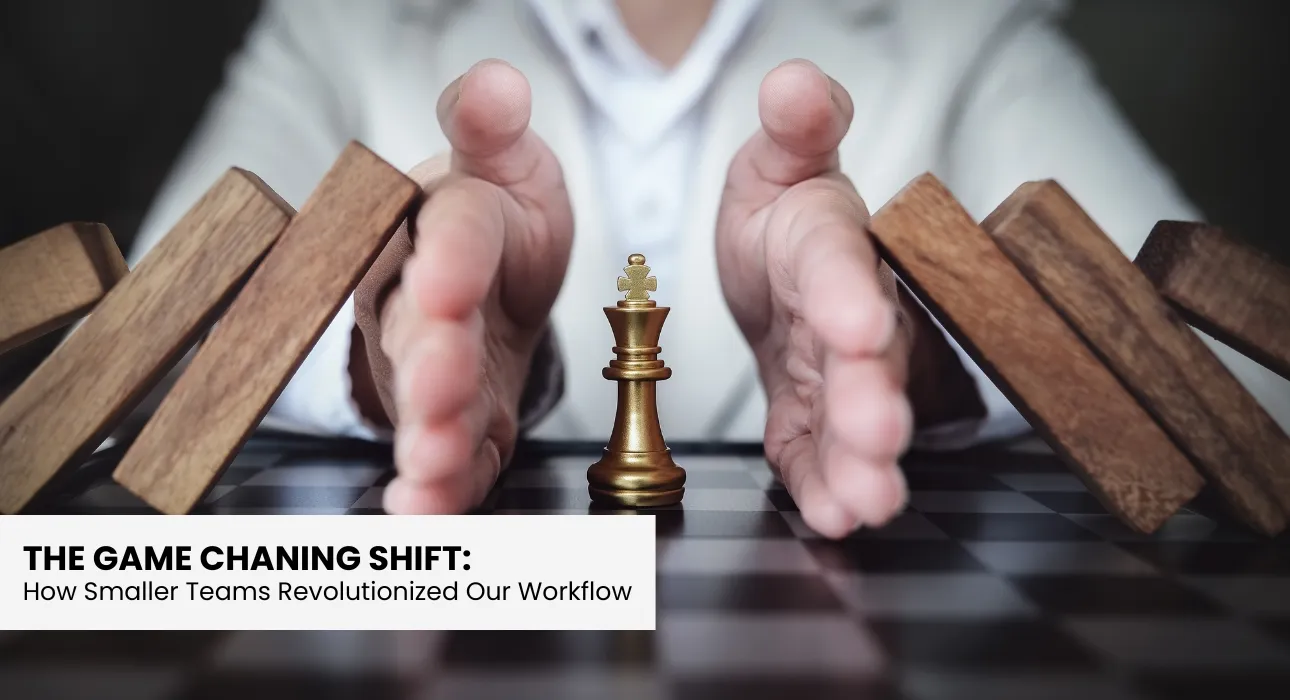Design, Marketing August 2023
The Game-Changing Shift: How Smaller Teams Revolutionized Our Workflow

Ever noticed how smaller teams tend to be more efficient and productive? This can be attributed to the concept of communication complexity. Metcalfe's Law states that as a network grows larger, effective communication becomes increasingly difficult. The start-up culture that rose in the past two decades have proven how a team can be self-sufficient and showcase higher productivity than the kafkaesque system to long communication chains.
This principle is not limited to technology; it also applies to teams and organizations. When groups become too large, maintaining smooth communication becomes a challenge. Our brains have limitations, allowing us to maintain close connections with about 5 people and a few less intense connections with an additional 15.
For this reason, sports teams typically have around 15 players. Forward-thinking organizations have recognized the importance of moving away from traditional top-down hierarchical structures. Instead, they create networks of autonomous teams, empowering and trusting their workforce rather than micromanaging, reducing the need for extensive middle management. This approach enables improved communication and coordination without unnecessary complexities, and also helps in skill development of individuals.
In today’s environments, it becomes a better option to keep teams small to ensure effective communication and information-sharing. The goal is to find the ideal size where everyone can work together cohesively without feeling overwhelmed.
Adopting this new approach has proven to be a game-changer for us, and we are committed to never reverting to the old working model again. The shift towards smaller, autonomous teams has empowered us to achieve greater productivity and success.






